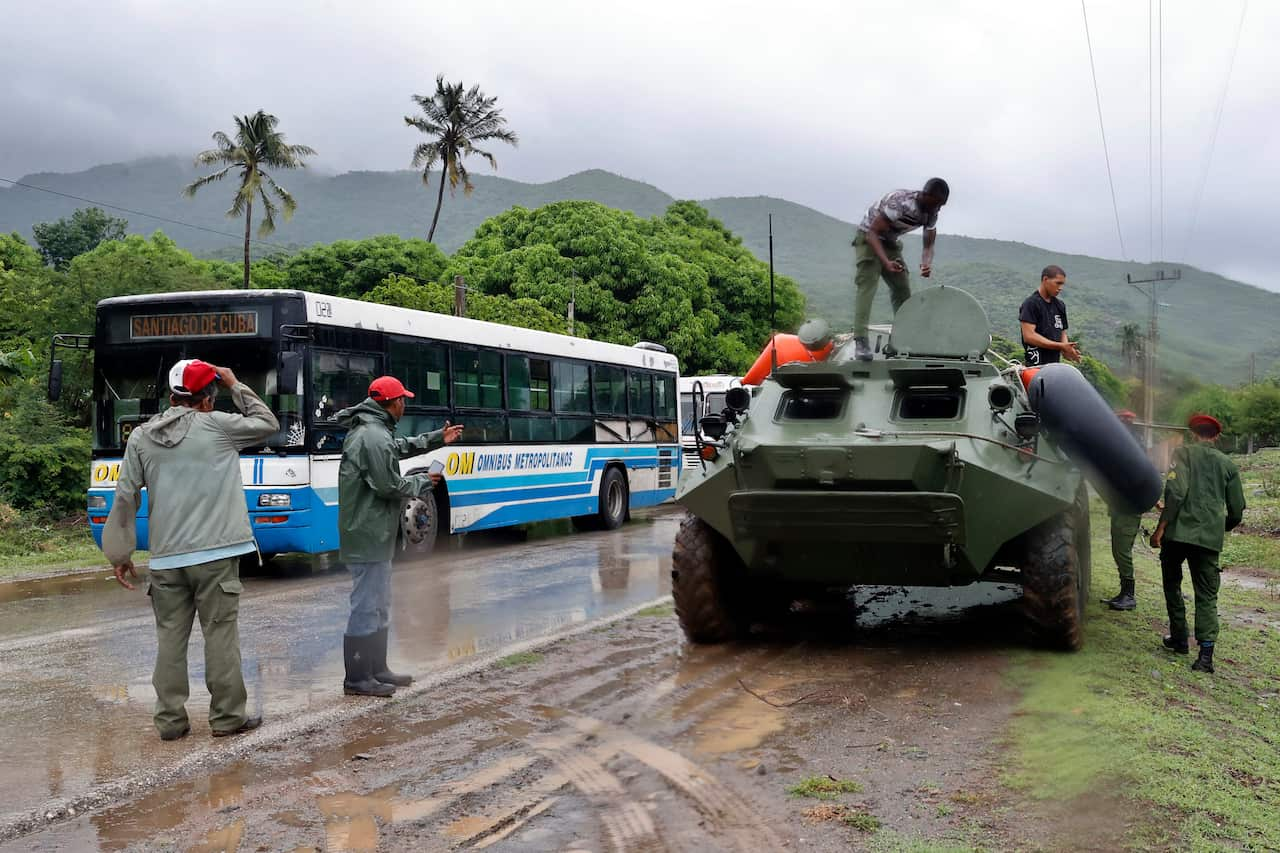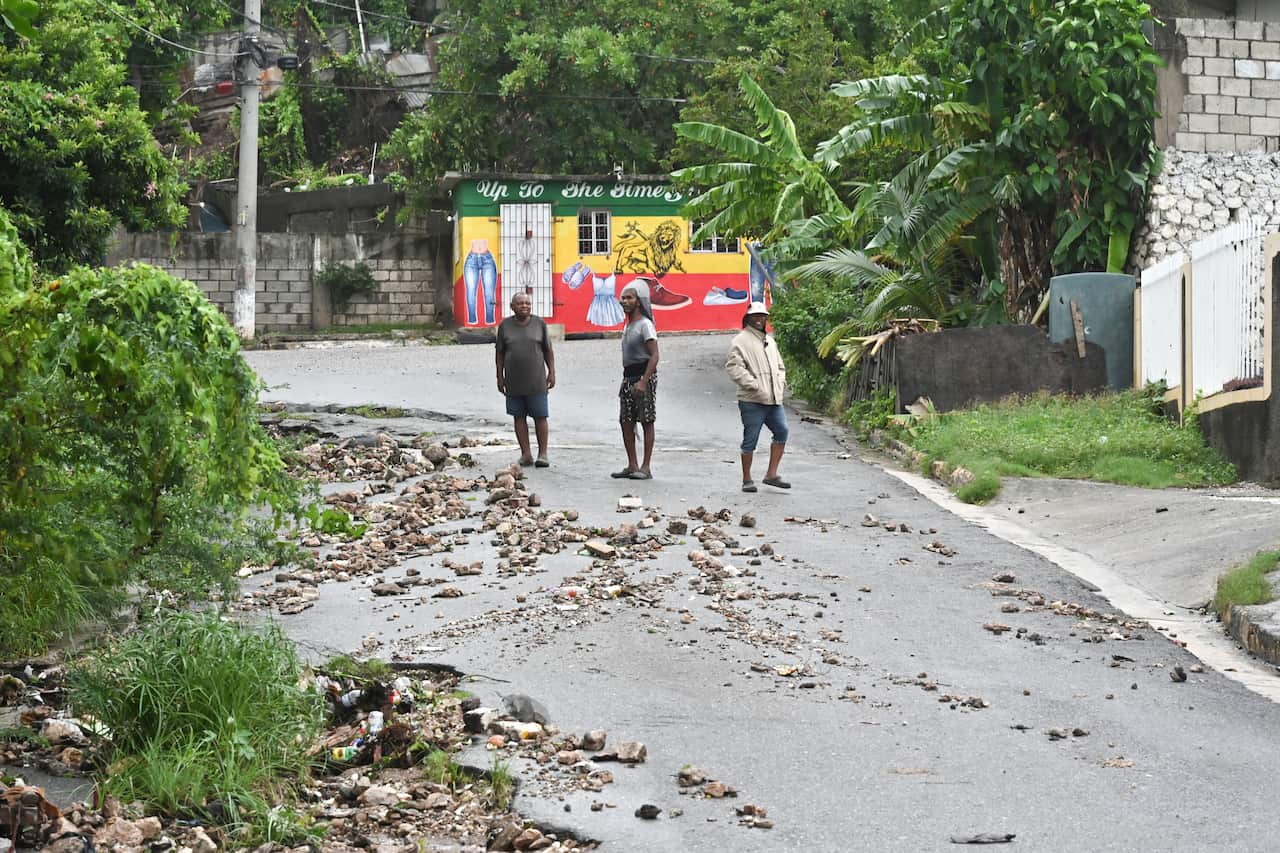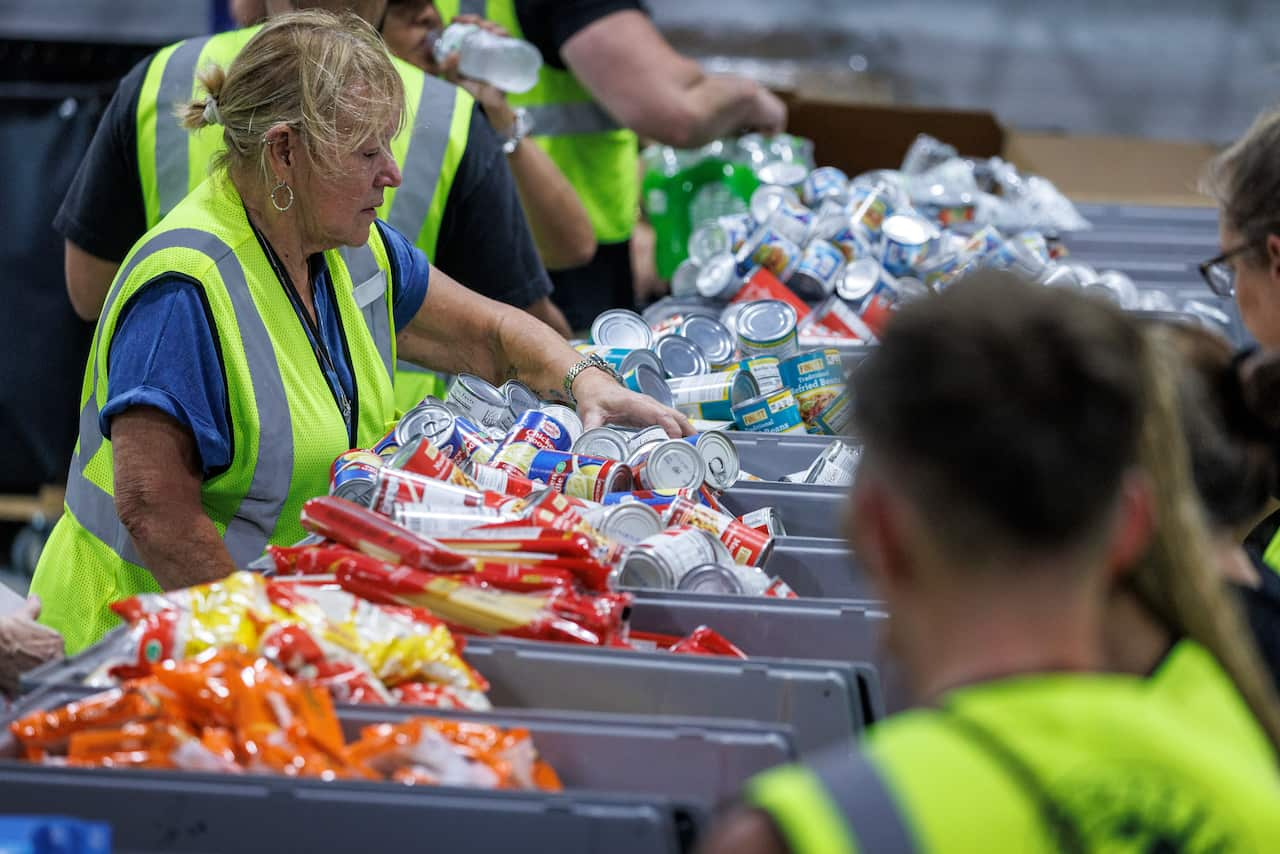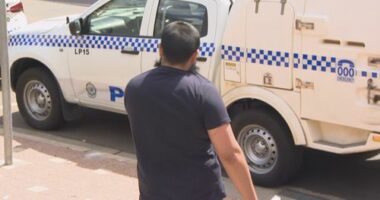Share this @internewscast.com
At its height, the storm unleashed devastating winds reaching 300 km/h. Information on casualties was not immediately available.
This hurricane marked the most severe ever recorded in Jamaica, making landfall with wind speeds exceeding those of many of history’s fiercest storms, such as Hurricane Katrina in 2005, which inflicted significant damage on New Orleans.

In a coordinated effort, police and members of the Revolutionary Armed Forces are facilitating evacuations along the road to Chivirico, in Santiago de Cuba, Cuba. Source: AAP / Ernesto Mastrascusa / EPA
The storm lingered over the Caribbean nation for several hours, weakening as it moved across land. By Tuesday evening, its intensity had decreased to a category 3 from the maximum category 5.
Nonetheless, the formidable Hurricane Melissa was expected to strike Cuba by Wednesday night, followed by the Bahamas.

Hurricane Melissa made landfall in Jamaica with maximum sustained winds of nearly 295km/h, torrential rains, and storm surges that threaten to cause flooding and damage. Source: AAP / Rudolph Brown / EPA
The mammoth storm could leave devastation on the scale of some of the worst hurricanes in recent memory, like Katrina, Maria or Harvey.
Climate change impact
Climate scientist Daniel Gilford said: “Human-caused climate change is making all of the worst aspects of Hurricane Melissa even worse.”

The US-based humanitarian organisation GEM, which specialises in rapid disaster relief, is mobilising an aid operation both before and after Hurricane Melissa. Source: AAP / Christobal Herrera-Ulashkevich / EPA
The Jamaican Red Cross, which was distributing drinking water and hygiene kits ahead of infrastructure disruptions, said Melissa’s “slow nature” exacerbated the anxiety.











